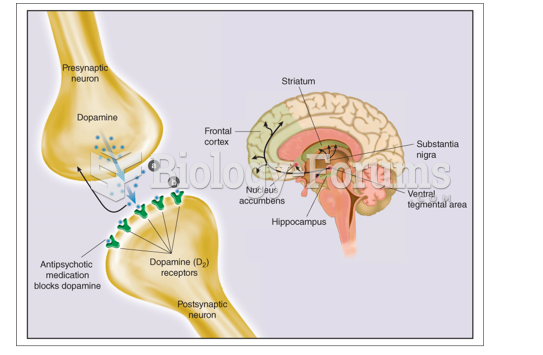|
|
|
Illness; diuretics; laxative abuse; hot weather; exercise; sweating; caffeine; alcoholic beverages; starvation diets; inadequate carbohydrate consumption; and diets high in protein, salt, or fiber can cause people to become dehydrated.
Throughout history, plants containing cardiac steroids have been used as heart drugs and as poisons (e.g., in arrows used in combat), emetics, and diuretics.
Each year in the United States, there are approximately six million pregnancies. This means that at any one time, about 4% of women in the United States are pregnant.
When taking monoamine oxidase inhibitors, people should avoid a variety of foods, which include alcoholic beverages, bean curd, broad (fava) bean pods, cheese, fish, ginseng, protein extracts, meat, sauerkraut, shrimp paste, soups, and yeast.
The liver is the only organ that has the ability to regenerate itself after certain types of damage. As much as 25% of the liver can be removed, and it will still regenerate back to its original shape and size. However, the liver cannot regenerate after severe damage caused by alcohol.
 The spatial distribution of trees in three separate stands of different ages on Vancouver Island (da
The spatial distribution of trees in three separate stands of different ages on Vancouver Island (da
 While numerous subspecies of the jaguar have been recognized, recent research suggests just three. G
While numerous subspecies of the jaguar have been recognized, recent research suggests just three. G
 Colostomy. Alternate versions of colostomy are illustrated, each of which creates one or more new op
Colostomy. Alternate versions of colostomy are illustrated, each of which creates one or more new op




